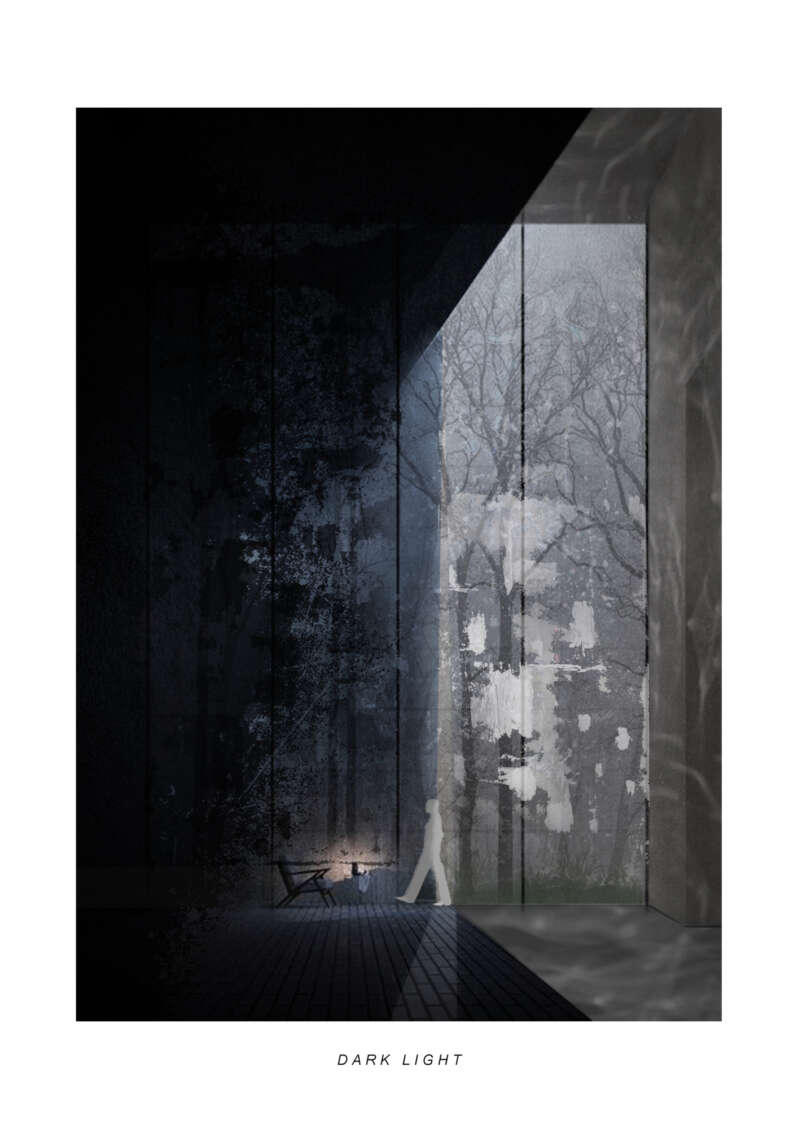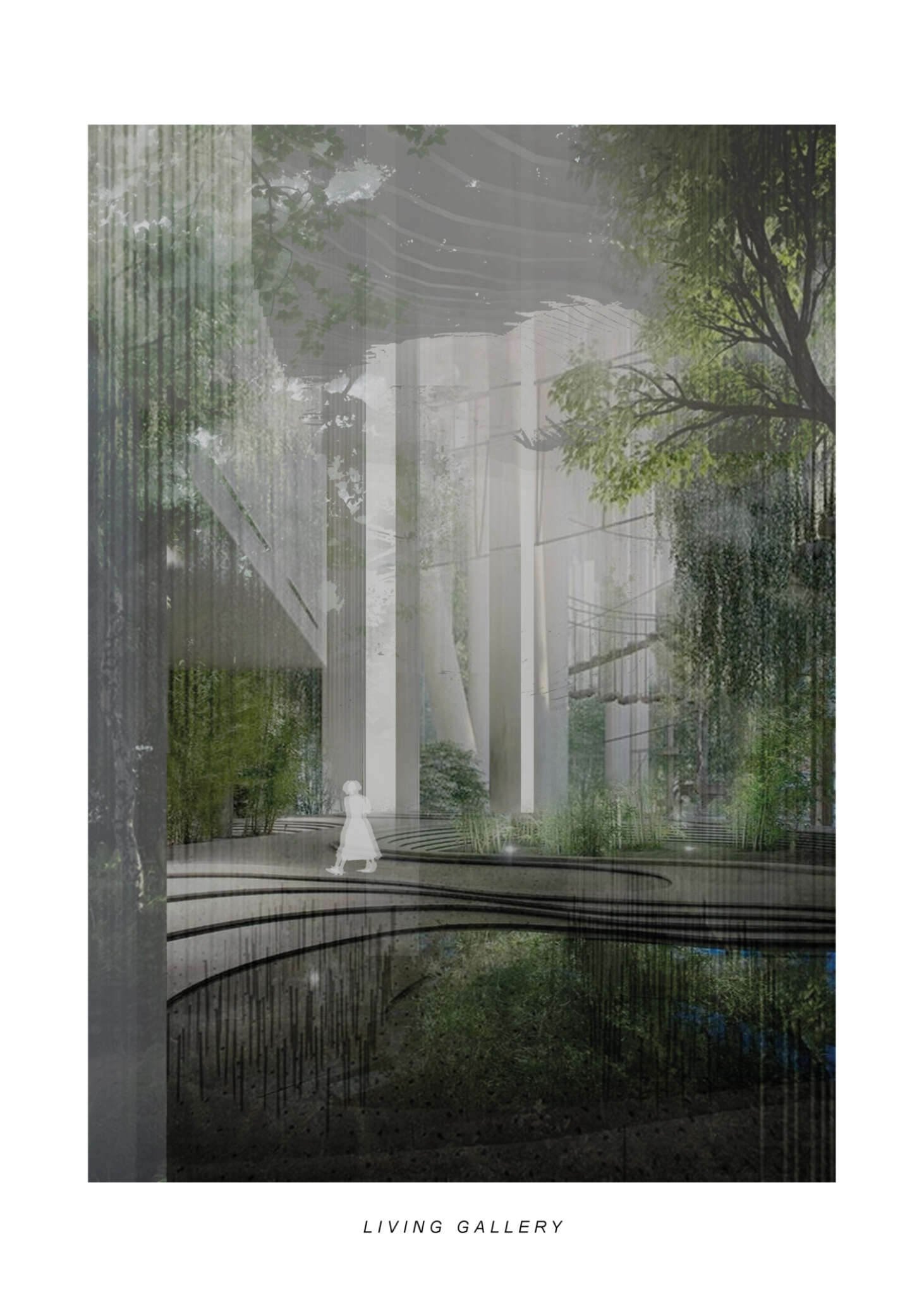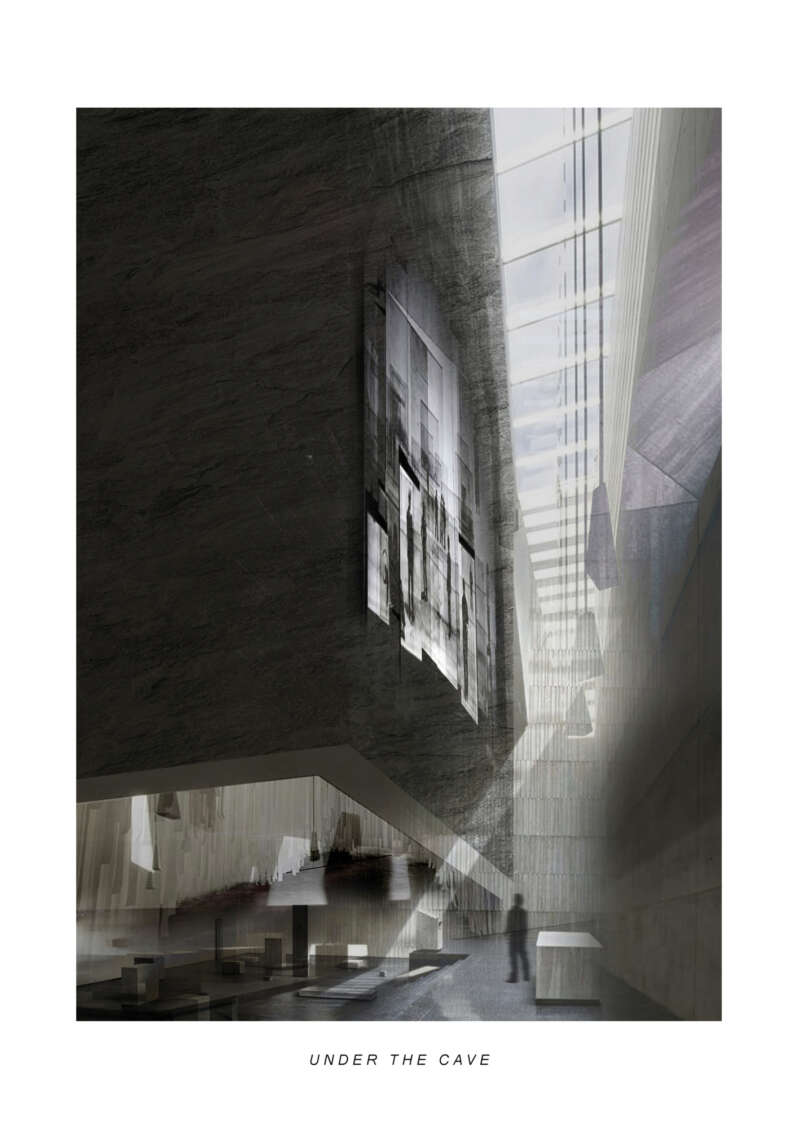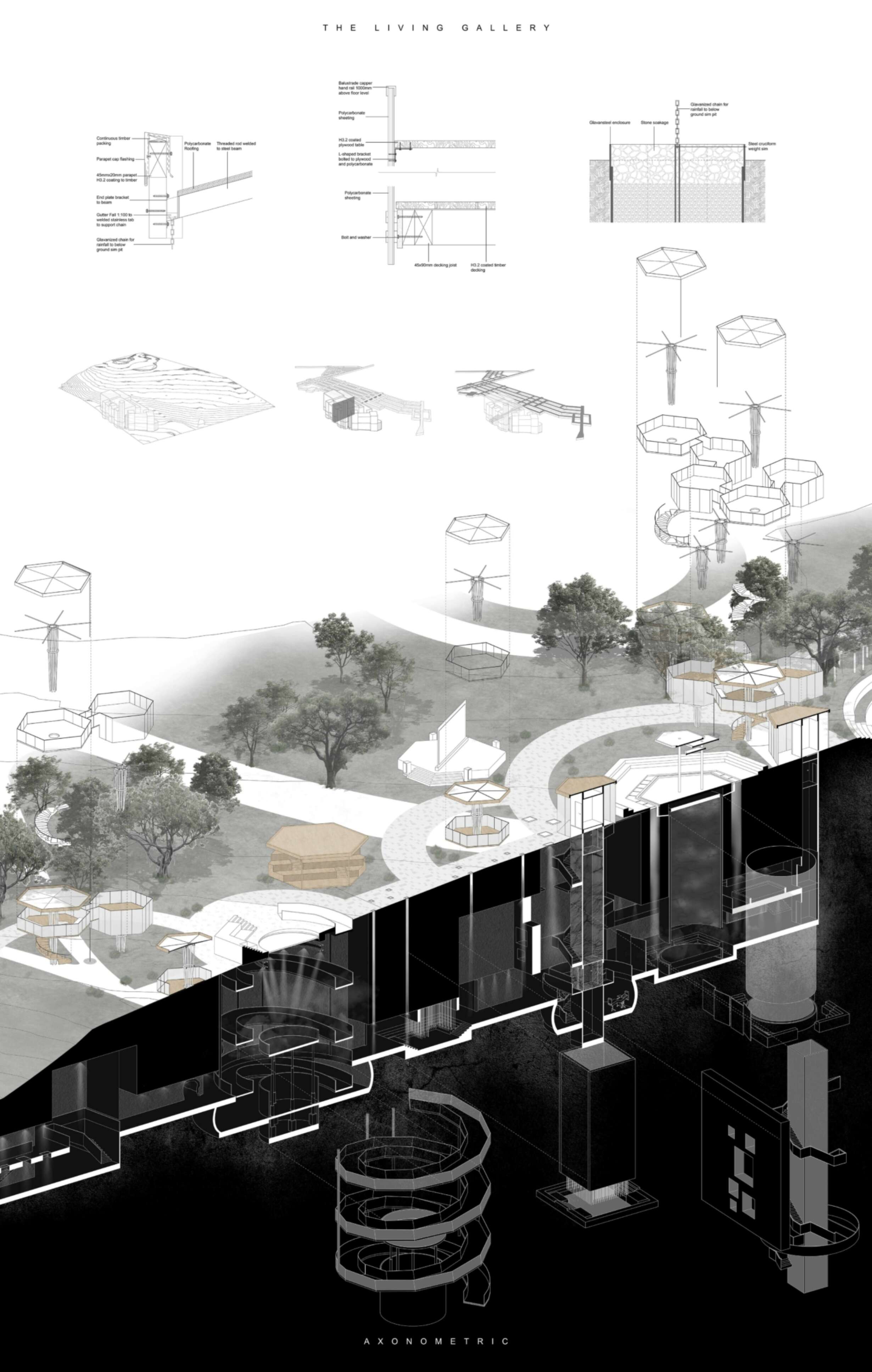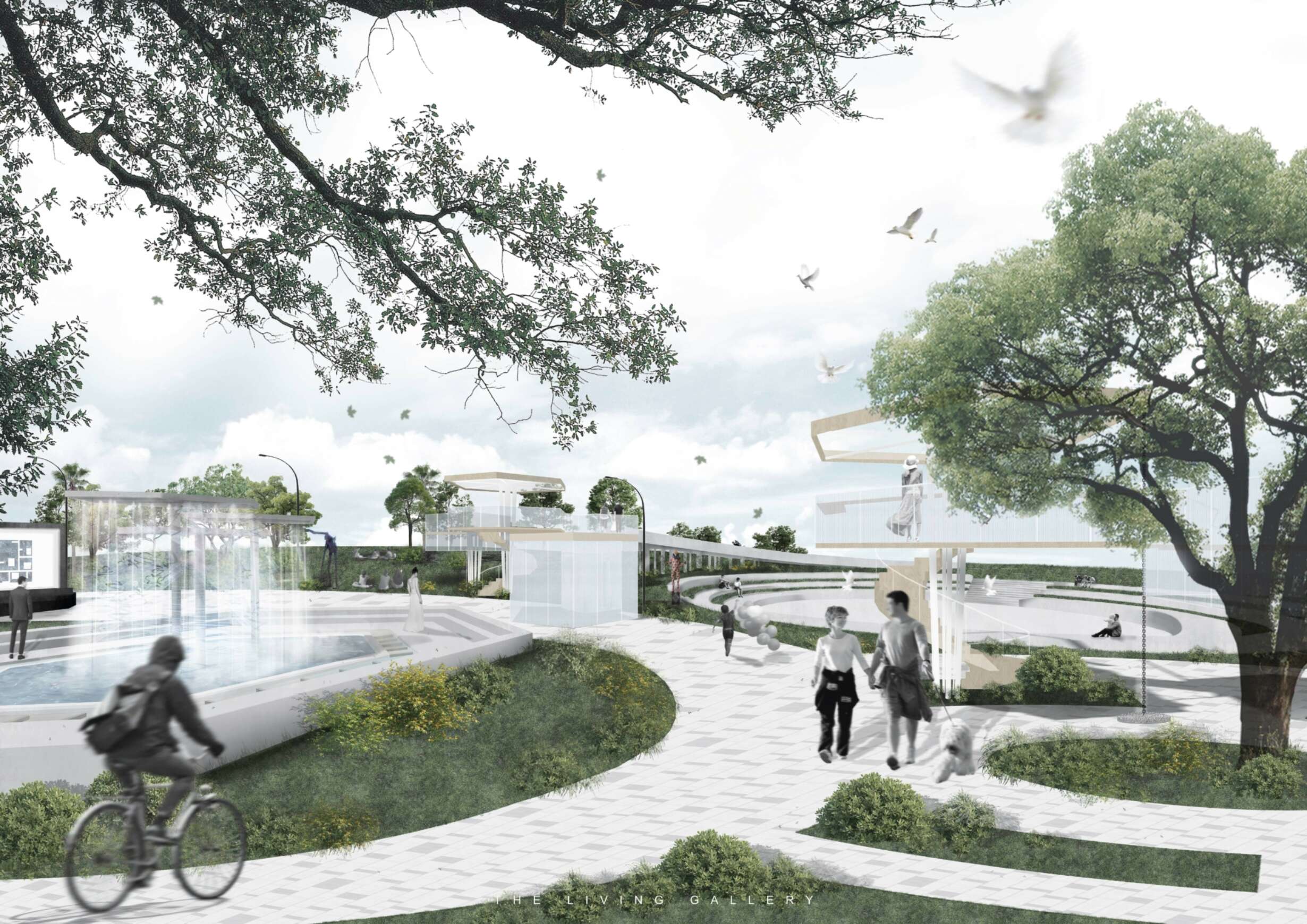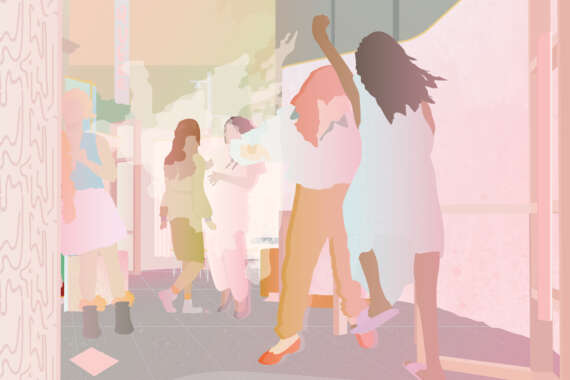The Living Gallery: Expanding the Realm of Art Exhibition as Embodied Journey

How can an art gallery engage with broader communities within the urban fabric to facilitate more dynamic and inclusive experiences?
Art is a living, evolving undertaking that charts the evolution of human progress. It has been defined in many ways, especially in relation to being a creative activity that affects the human spirit. However, art galleries and museums are often seen as privately secured spaces designed to display conventional artworks with controlled public access. Such containment and embodied regulation within modernist white boxes minimize engagement between the visitors and the work itself. Exhibition spaces of iconic galleries therefore face challenges created by lack of spatial engagement and communal experience. Over the years, the Gallery changed from displaying traditional paintings on white walls to a variety of contemporary participatory experiences within black boxes that involve interaction between art and the public. However, this thesis argues that the public’s sensory experience should not be limited within a passive framed enclosure, be it white or black. It is therefore essential to create more dynamic surroundings that challenge the existing modernist gallery design.









